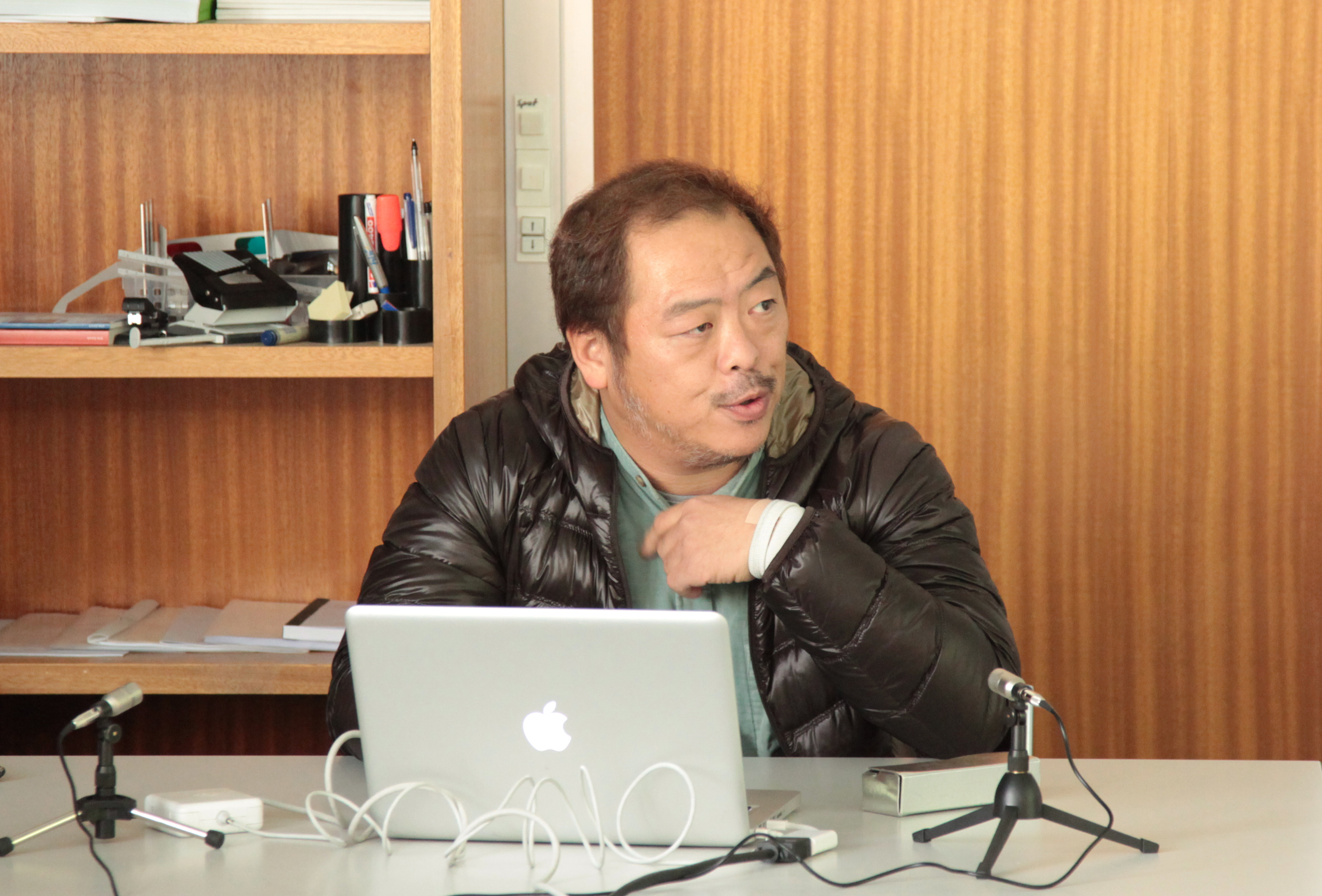M3:30.11.2010/ Osamu Tsukihashi, Kobe University
30.12.2010, 10:00: Osamu Tshukihashi, Graduate School of Eng.Kobe University @ CAAD, HPZ, F
http://www.teehouse.com, ARCHITECTS TEEHOUSE
Mounting Geometry
Background in traditional village researches with Hiroshi Hara, Professor Tsukihashi talked about聽japanese geometrical concepts with his work and briefly introduced the city of Kobe.
1. Geometry of “na-ga-re” :聽the flow of air, a stream of water, a current of the times, the passaage of time
2.聽Geometry of “gyo-shu” : agglomeration
3. Geometry of聽“ri-san” :聽scattered, discrete, discrete space, discrete mathmatics
4. 聽Geometry of聽“kai-yu” : an excursion, round trip
5.聽Geometry of聽“so-ran” : catalogue raisonne, looking up
.
.
The OSAMU TSUKIHASHI from Kobe University in Japan tries to tell us about the Japan culture and design traditions. He explains what is the geometry concept in Japan. What geometry is? We learned that the Japan does not have the geometrical maps. The people organize themselves in non-geometrical way. There is no precisely architectural drawing, no math descriptions, and no street names but in the other hand he show us extremely geometrical building. In Europe we have different situation our drawing usually are very geometrical and we use extremely clear math descriptions, but it has very rare translation to the buildings.We also discuss about the relation between the mathematics and geometry and how people promote the technology today. The tools are available today, we can make move curves because of computers but does it mean that it is more design because of curve lines? We were starting to thing what is the different between the design process 100 years ago and today?In 50,60,70 last century everything was working like machine (functionalism style), but now we should think more what can we do with function? What can be done with the functionalistic things? If we will be follow the machines, new caad system, new technology without changing our attitudes nothing would change.If any element, any relation get certain autonomy and if we give any elements the potential of being design as many functions as many elements we create we are able to give any element the potential to have any function.We were discuses how to address problems which was not address yet and how to find the solution for the problem which are not named yet.In functionalist approach it is impossible to find the solution for extremely complicated building (for ex.Beijing National Stadium by Herzog & de Meuron) but using the evolution algorithm when everything is inter-connect, integrate, interlock with each other we can get the solutions. The things, which we create are working in geometrical way and solutions are geometrical ,but how to achieve the solution is based on the opposite attitude. We believe that architectural functionalistic approach have to be today rethought. Today we are looking in our culture, tradition, we have a lot of relation in design, complex situation in design and complex culture of design and we can not allow to lose all differentiation and architectural culture because of big technology.What geometry might be? Multiplicity of understanding: How math and computers are involved in our culture?聽 Up to XVI century the geometry was determined by organizing the society (logic and geometry). People behaved in circles and grids. They started by analysis (we called today). The priority is not geometry, but it is analysis (numbers, calculating, arithmetic). Then we started to make some taxonomies(http://en.wikipedia.org/wiki/Taxonomy) and we switch not to real things but to relation to the things. The primary interest for ordering our society, city鈥檚 and buildings shift from (geometry+logic) to arithmetic, so the numbers was first. Currently we are thing that it is big misunderstanding. The computers are machines and they are working in space of numbers but they are not.Currently we talk a lot about symbols. What we called symbols is beyond the numbers, beyond the rationality. In the end we have geometry, but it behaves in a different way, they have another meaning. If we have pure analytical things develop by machines the priority things would be numbers (functionalistic approach) but if we thing about symbols the question will be not be: How to get the algorithm to find the function? but what the priority question is? What your personal interests are? Then we will start to develop the relation and geometry.We thing that the big step is to forget about the analytical things (machines) ,but to use the computer to find the right analysis. The computers are able to make analysis and calculations, machines are giving the solutions, not to giving the questions and specifies environment.
